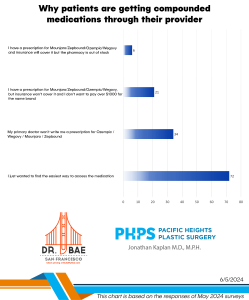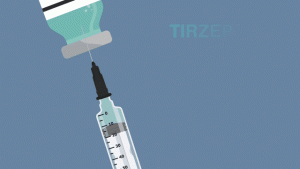The Food and Drug Administration (FDA) released a new safety communication about squamous cell carcinoma (SCC) and various lymphomas in the capsule around breast implants.
BIA-SCC and BIA-ALCL
Breast implant associated squamous cell carcinoma and breast implant associated anaplastic large cell lymphoma are very rare. In fact, the incidence of these disease processes is not measured in annual rates. They are so rare that the case count is measured by the number of cases that have ever occurred in history. Understanding personal risk is important when recognizing this low incidence.
According to the American Society of Plastic Surgeons, there are 16 cases reported in the literature for BIA-SCC ever. In regards to BIA-ALCL, there are approximately 400 confirmed cases in the United States and a total of 1,227 worldwide as of August 2022.
BIA-SCC is a very rare but potentially aggressive tumor that appears to be associated with the scar that forms around any type of implant (knee implant, breast implant, etc), and in the case of breast implants, from the breast implant capsule. Because there are so few cases, it is not possible to determine what factors increase patient risk for BIA-SCC prior to their breast augmentation.
BIA-ALCL is a lymphoma or lymphoproliferative disease process. More information is available here. Below you can review a comparison of these two entities based on an overview from the American Society of Plastic Surgeons. Some information may be technical and more appropriate for your healthcare provider but it also offers the consumer insight into the language you may need to understand the full scope of these disease processes.
What is it?
BIA-SCC
Breast implant-associated squamous cell carcinoma (BIA-SCC) is a very rare but potentially aggressive, epithelial-based tumor that appears to emanate from the breast implant capsule. Pathology shows sheets of squamous cells lining the capsule in nests and bundles. BIA-SCC can exhibit highly invasive properties including spread to lymph nodes, local tissues and distant sites, such as muscle and bone.
BIA-SCC is not a cancer of the breast tissue itself.
BIA-ALCL
Breast implant-associated anaplastic large cell lymphoma (BIA-ALCL) is an uncommon and treatable type of T-cell lymphoma that can develop around breast implants. BIA-ALCL can exhibit highly invasive properties, including spread to lymph nodes, local tissues and distant sites.
BIA-ALCL is not a cancer of the breast tissue itself.
Lifetime Risk
BIA-SCC
Unknown.
BIA-ALCL
The current lifetime risk of BIA-ALCL varies widely (e.g., estimates of 1:2,207-1:86,029 based upon variable risk with different manufacturer types of textured implants. More recently, cumulative risk over 20 years in breast reconstruction patients implanted with Biocell devices was estimated at 1:100 (Cordeiro et al, 2020).
Age at presentation
BIA-SCC
55.8 years (range 40-81)
BIA-ALCL
55.3 years (range 28-84)
Average length since initial implantation
BIA-SCC
Average length since initial implantation 22.74 years (range 11-40 years)
BIA-ALCL
10.32 years (range 0.08-41 years)
Implant Surface
BIA-SCC
In case reports, BIA-SCC has been reported in patients who have had smooth and/or textured implants.
BIA-ALCL
No cases of BIA-ALCL have been confirmed in patients who have only had smooth implants in case series, case reports or registries. However, it is not possible to exclude the appearance of BIA-ALCL in association with smooth implants at this time. The FDA states that all confirmed cases worldwide either have a history of a textured device or an incomplete clinical history available for review.
Implant Type
BIA-SCC
BIA-SCC has been associated with both silicone and saline implants in aesthetic as well as reconstructive patients.
BIA-ALCL
BIA-ALCL has been associated with both silicone and saline implants in aesthetic as well as reconstructive patients.
Presentation
BIA-SCC
Delayed seroma (fluid collection), unilateral swelling, pain, erythema, often capsular contracture
BIA-ALCL
Delayed seroma, unilateral swelling, pain, erythema, sometimes capsular contracture
Extracapsular spread at presentation
BIA-SCC
80% at presentation
BIA-ALCL
28% at presentation
Typical Pathology
BIA-SCC
Squamous cells in sheets with varying degrees of atypia and metaplasia and at least one focus of SCC.
BIA-ALCL
Lymphoma with mass confined to single area on capsule.
Diagnostic Assessment
BIA-SCC
Send fluid collection sample to lab for testing of CK 5/6+ protein; p63+; Flow cytometry + for squamous cells and keratin
BIA-ALCL
Send fluid collection sample to lab for testing of CD30+ protein; ALK-; Flow cytometry + for T-cells
Imaging
BIA-SCC
Ultrasound to evaluate for fluid around the implant +/- aspiration; MRI with and without contrast to evaluate capsule to rule out mass; PET-CT for extent of disease, if present.
BIA-ALCL
Ultrasound to evaluate for fluid around the implant +/- aspiration; PET‐CT is performed following a positive diagnosis. Mammograms are not helpful for evaluating lymphoma but are important for the evaluation of breast cancer.
Treatment
BIA-SCC
Official treatment recommendations will need to be based on emerging data. At present, it appears that explantation with complete (en bloc) capsulectomy will provide the best outcomes.
Based on existing case reports, it appears that incomplete resection of BIA-SCC can result in early and/or aggressive recurrence.
BIA-ALCL
In the majority of cases, explantation with complete (en bloc) capsulectomy is curative. Incomplete capsular resection has been associated with both recurrence and significantly lower survival. Rare patients will present with more advanced disease and may require radiotherapy and chemotherapy. Treatment approach should follow international guidelines established by the National Comprehensive Cancer Network (NCCN) for BIA-ALCL. Current treatment recommendation is for bilateral complete capsulectomy and implant removal, as a small number of women have had contralateral disease found incidentally.
Chemotherapy / Radiation Therapy
BIA-SCC
Patients treated within these cases did not appear to respond.
BIA-ALCL
Responds to Brentuximab plus CT.
Reporting
BIA-SCC
The FDA recommends that any suspected or confirmed cases of SCC, lymphomas, or any other cancers around the breast implant be reported to the FDA’s Manufacturer and User Facility Device Experience (MAUDE) database and the device manufacturer. To submit a case to the MAUDE database, which collects medical device reports (MDRs) of suspected device-associated deaths, serious injuries and malfunctions, visit www.accessdata.fda.gov.
BIA-ALCL
The FDA recommends that any suspected or confirmed cases of BIA‐ALCL be reported to the PROFILE registry, the FDA’s Manufacturer and User Facility Device Experience (MAUDE) database and the device manufacturer. To submit a case to the MAUDE database, which collects medical device reports (MDRs) of suspected device-associated deaths, serious injuries and malfunctions, visit www.accessdata.fda.gov. To report a case to PROFILE, go to ThePSF.org/PROFILE.
Patient Counseling and Informed Consent
BIA-SCC
BIA‐SCC should be discussed with any patient considering breast implants as part of the informed-consent process.
BIA-ALCL
BIA‐ALCL should continue to be discussed with any patient considering breast implants as part of the informed-consent process.
American Society of Plastic Surgeon/Plastic Surgery Foundation Recommendations
Prior to implantation of any breast implant, plastic surgeons should provide patients with the manufacturer’s patient labeling, the FDA-required patient decision checklist and any other educational material to best discuss the benefits and risks of breast implants.
Preoperative workup is essential. All patients presenting with a late seroma should have fine needle aspiration (FNA) and cytology testing. Specimens should be sent for immunohistochemistry including CD30, ALK, CK 5/6, p63 and flow cytometry to look for T-cells, squamous cells and keratin.
All patients presenting with a late seroma should undergo a breast ultrasound and MRI with and without contrast. If disease is confirmed, a PET-CT should be considered prior to surgical intervention. A thorough preoperative work-up allows for potentially the most appropriately planned, single-stage surgery with the greatest chance of success for cure.
Consider the possibility of BIA-ALCL, BIA-SCC and other lymphomas when treating a patient with late-onset, peri-implant changes. If you have a patient with suspected BIA-ALCL or BIA-SCC, refer them to experts familiar with the diagnosis and treatment of BIA-ALCL and BIA-SCC.
At surgery, collect fresh seroma fluid, representative portions of the capsule, and specific pathology requests to rule out both BIA-ALCL and BIA-SCC.
Diagnostic evaluation should include cytological evaluation of seroma fluid or mass with Wright Giemsa stained smears and cell block immunohistochemistry/flow cytometry testing for cluster of differentiation (CD30) and Anaplastic Lymphoma Kinase (ALK) markers, as well as Cytokeratin 5/6 (CK 5/6) and p63.
Flow cytometry should include instructions to look for T cells, squamous cells, and keratin.
All confirmed or suspected BIA-SCC data should be entered into the PROFILE Registry (Data entry mechanism forthcoming).
Data for all patients with seroma should be entered into the National Breast Implant Registry (NBIR).
Click here for the original blog post written by Dr. Jonathan Kaplan for BuildMyHealth.




